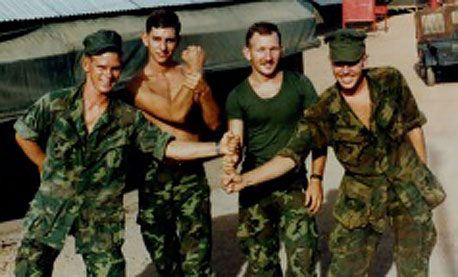 Stories
Stories  Comments Off on Meade River Operation – November 19 to December 9, 1968 3rd Platoon, Alpha Co, 1st Bn, 7th Marines
Comments Off on Meade River Operation – November 19 to December 9, 1968 3rd Platoon, Alpha Co, 1st Bn, 7th Marines Meade River Operation – November 19 to December 9, 1968 3rd Platoon, Alpha Co, 1st Bn, 7th Marines
Dear Garrett & Mark,
I have attached a short recollection of my memory of the events of my platoon’s involvement in Operation Meade River in Nov-Dec 1968. A guy is writing a story about our Battalion, and asked me, and others in our company, to write our memories. You may recall some of this from our “Walk through Vietnam” counseling/groups.
Several of the guys in my company and platoon send emails to me occasionally, and our company and battalion have reunions every year or so; I don’t go to the reunions any more, but did a couple of times.
– Ben
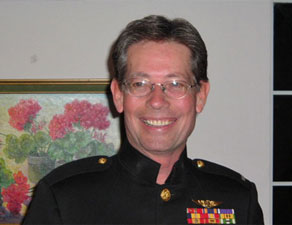
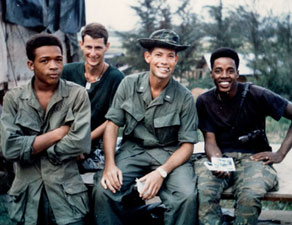
Meade River Operation – November 19 to December 9, 1968
3rd Platoon, Alpha Co, 1st Bn, 7th Marines
Memories of Ben J. Sorrell, 2nd Lt, Platoon Cmdr:
Our platoon kicked off our stage of the operation by humping from Hill 37 on Nov 19 to a blocking position on the north side of Song La Tho River, or the Suoi Co Ca River (I can’t remember which). As I recall, the bulk of the participants came in a massive airlift on Nov 20, but probably there were other units that also humped in to other positions around the cordon.
We stayed in the same general area until Thanksgiving Day. It rained frequently for the entire time we were on the operation. Our artillery, air and mortars had missions “softening up” the territory within the cordon throughout the days and nights. We would hear the artillery rounds, being fired from about half a mile north of us, whistling over our heads and exploding on targets just about 100 meters to the south of our positions. We always hoped that this next one coming would not be a short round! There were occasional mortar attacks from the NVA trapped somewhere south of the river, and less frequently random firearm rounds would come close. We knew they were close when we heard the “pop” of the bullet as it passed…then we would duck or move around to not be so easy a target. On Nov 22, five of our guys were wounded from one mortar round. I recall tracers from automatic weapons within the cordon firing at every airplane that took off from Danang Airport…but they didn’t dare fire up at “Puff the Magic Dragon” flying only a 1000 feet or so above them! As we watched “Puff” do his magic, I recall the treelines across the river just being disintegrated by the thousands of rounds per minute being fired.
On Nov 25, one of our guys caught a piece of shrapnel in his leg from a grenade that went off across the river! It was his third wound, so he left on the resupply chopper the morning of the 26th. My information was that 39 Marines had been killed on the operation to that date. On Thanksgiving Day, Division showed up with turkey and dressing and all the fixin’s, with CBS TV cameras there to record how well we were being treated. But, by the time our platoon got to the chow line, we got the word to move out, so we ended up eating rations again that day. Morale was pretty low that night. We were sent to the eastern end of the cordon, and positioned between two other units, one of which was ROK Marines. By morning, they were gone, leaving our flank unprotected, and a big gap in the cordon!
I don’t recall when we arrived on the south portion of the cordon, almost to the west end near the abandoned railroad berm. On Dec 3, we were at coordinates 000585. Lt. Huesner, platoon commander of 2nd platoon, was wounded when his radioman hit a booby trap. They were medivacced, which left me as the only Lt. in Alpha Company remaining in the field. That day I was informed that all of Alpha Company’s gear had been moved from Hill 10 to Hill 55, which would be our permanent base of operations after the conclusion of Operation Meade River. Around the 5th of December, I recall us finding some tunnels out in front of our lines. We threw some grenades down the hole, and three NVA or VC came out of the tunnel. Some weapons were also recovered.
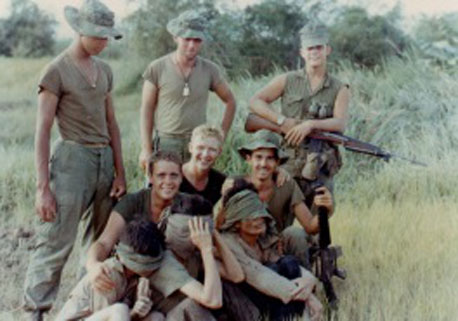
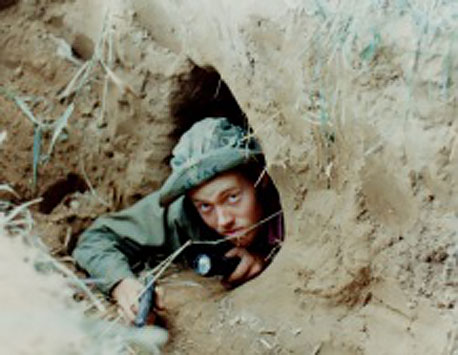
As you can see in the picture above, the terrain, while being generally flat, had a lot of grass and old rice fields that had not been tended for years, and in some areas earth berms that might be three or four feet high, with scrubby trees growing on the berms and paddy dikes. Interspersed there were bomb craters from months of dropping 500 pound bombs with delay fuses to try to collapse the tunnel system that ran throughout Dodge City. This was all a part of the NVA system to get rockets and personnel through the 7th Marines semi-circle around DaNang.
The next day, December 6, after we dug in for the night, on line as a company (I can’t recall which platoons were on our right or left), one of my squads opened fire on what they thought were gooks out front of their position. I asked Capt. Foster for permission to call in some artillery during the night to disrupt any plans that may have been in the making by the VC/NVA; but Foster thought it would be too risky to have artillery from Hill 55 or Hill 37, which would be firing directly toward us, and a long round might end up on top of us. We did get some light from artillery shells that would eject a parachute holding a bright white-phosphorous candle, but never could see any more movement.
At first light on Dec 7, the shit hit the fan! As the entire south side of the cordon moved out northward, on line, Mike Tyree’s squad was the first to move forward on our front. We began taking automatic weapon fire from all across our front, and Tyree and his men ran forward through the muddy rice field to a low dike that was the only cover between them and the trees from where all the fire was coming. He had some immediate casualties, Babe Pinole being one of the first to be killed, and LCpl Lanny Phipps.
At one point early on, I was standing behind a berm with Staff Sgt Flaherty from 2nd Platoon on our right flank, as we were assessing the situation. He was hit with a bullet and his left upper arm just seemed to explode, and was just hanging by some muscle tissue.
My radio operator was pinned down 30 ft or so west of me; I was trying to stay low down on my hands and knees as I was reporting the situation to Alpha 1, hollering back and forth. Suddenly I took a round through my upper left arm, but unlike Sgt Flaherty, it didn’t hit bone. I rolled a few times to get out of that line of fire!
At some point early on that morning, LCpl Lanny Phipps, Cpl Dan Phelps, Pfc Robert Pacheco had all tried to reach the machine gun position, and all three were killed by the crossfire from several positions behind the gun. The next day, when we recovered the bodies, Phipps had a grenade still in his hand, the pin already pulled.
Sometime during the day, while we were getting napalm out in front of us…closer than I like to remember seeing the canisters twisting and turning as they floated toward us…I was on my belly next to another Marine, trying to stay hidden in the long grass as we were pulling toward the rear another Marine who had taken rounds in both legs. Whomever was helping me took a round that hit both his wrists! Later in the day, I recall being pinned in a bomb crater as I was trying to get closer to the left side of the firefight, but by that time, we didn’t have much manpower left to fight with.
We also had 250# bombs dropped out front of us, and I recall seeing a large piece of shrapnel from a bomb fly through the air and hit a Marine flat in the back. If it had not been flat, it would have cut him in half. Even as it was, he had to be evacuated.
As dusk approached, the firing tapered off and some other unit moved in to reinforce us. The remainder of 3rd Platoon gathered to assess the damage (see the attached list of KIA and WIA I recorded in my green pad at the time). We had lost nine men killed and 15 wounded. I can’t remember those of us who were still there, but I think it was no more than 5 or 6. While we were eating some C-rations, a gook carrying an M-16 ran right up to our position…and we were all so shocked that we couldn’t get any weapons up before he took off down the line to our left. Shortly thereafter we heard several shots in that direction. I learned years later that machine gunner Ron Fiesler had seen him and killed him. The M-16 the gook was carrying belonged to one of our KIA’s.>
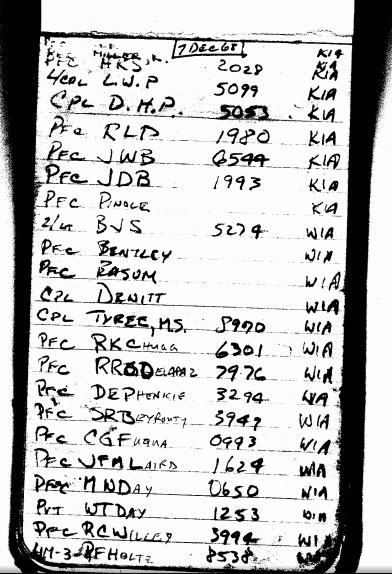
KIA & WIA
The next morning, Dec 8, we got the order to move forward, with some support from ARVN forces driving Armored Personnel Carriers. As we recovered our KIA’s, we put them aboard the vehicles…but not without having to force the ARVN to allow it. We didn’t meet much resistance that day…just some sniper and occasional automatic weapons fire; but the company to our right flank took 17 KIA’s, so this extended the operation for another day. It was late in the evening when our company made it to the river, which was the final objective of Operation Meade River. We discovered that the ARVN’s driving the APC’s had stolen all of our valuables, including my wallet, camera with 2 rolls of film taken on the operation, my address book, binoculars and shaving gear!
Most units still in the field had been taken out via helicopter during the day, but our platoon spent another mosquito infested night on the bank of the river before being lifted out the next day. While we were boarding the chopper, we were taking mortar rounds from the area of the operation!
Here are some pictures of the 3rd Platoon before Meade River. Unfortunately I cannot remember all the names.
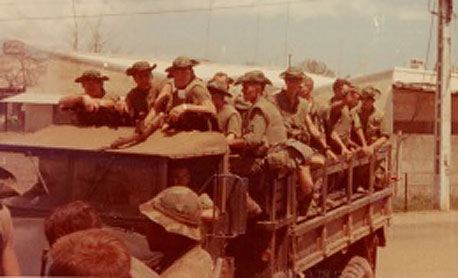
Heading to China Beach…around Oct, 1968
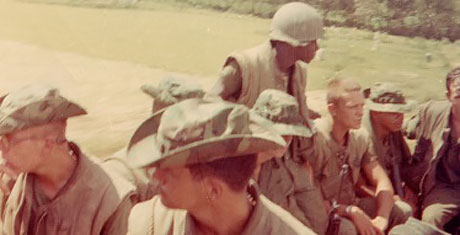
Pacheco in the front of the other truck.
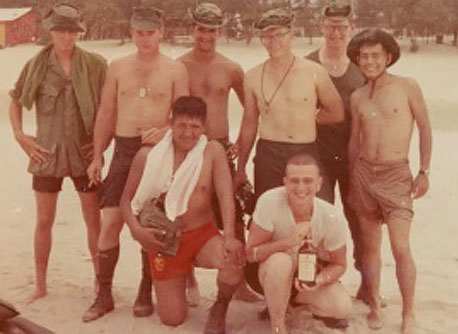
China Beach, around Oct, 1968. Standing L-R Cpl Humphrey, Cpl Phelps, Pfc Pacheco, Cpl Brewer, Pfc Chugg, Pfc Delapaz Kneeling L/Cpl “Chief” Sangster, Pfc Mizrachi
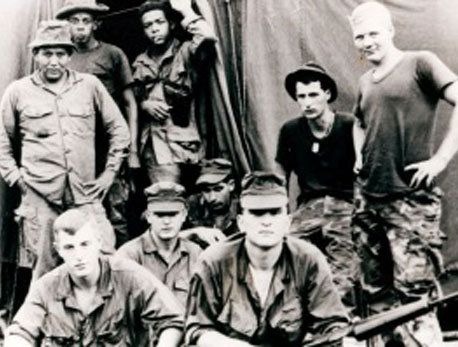
Tyree’s Squad? Back L-R Sangster, Williams, Day, Tyree, Fuqua, I remember the faces but can’t remember the rest of the names.
